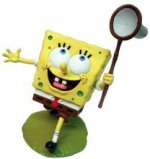ChrisRD":316k3brn said:DaisyPolyp":316k3brn said:I would love to see some objective analysis done on this topic to finally kill all the rumor/conjecture/speculation that is rampant.
People have tested different lamps over multiple tanks/vats all plumbed together with frags from the same mother colonies in them. It would be nice if someone who's done that could chime-in...
You're right, its called:
Photobehavior of stony corals: responses to light spectra and intensity
O. Levy, Z. Dubinsky and Y. Achituv
Faculty of Life Sciences, Bar-Ilan University, Ramat Gan 52900, Israel
4041 The Journal of Experimental Biology 206, 4041-4049
© 2003 The Company of Biologists Ltd
doi:10.1242/jeb.00622
I quote: "We studied the absorption and the action spectra for photosynthesis and the distribution of zooxanthellae within the corals. We also studied the photosynthetic characteristics of the four species using the
SCUBA-based, fast repetition rate fluorometer (FRRF)"
...in this study O'Levy shows that coral will retract their tenticles to provide maximum exposure to the light source in order to maximize photosynthesis... he goes on to make this conclusion:
"Light at wavelengths in the range 400–520nm was most effective in
eliciting full tentacle contraction"
...these measurements were taken using the Li-Cor LI1800 scanning spectroradiometer, which articles such as the one in AAOL failed to use because of their cost, but it is the only one that measure the lower wavelengths accurately.







